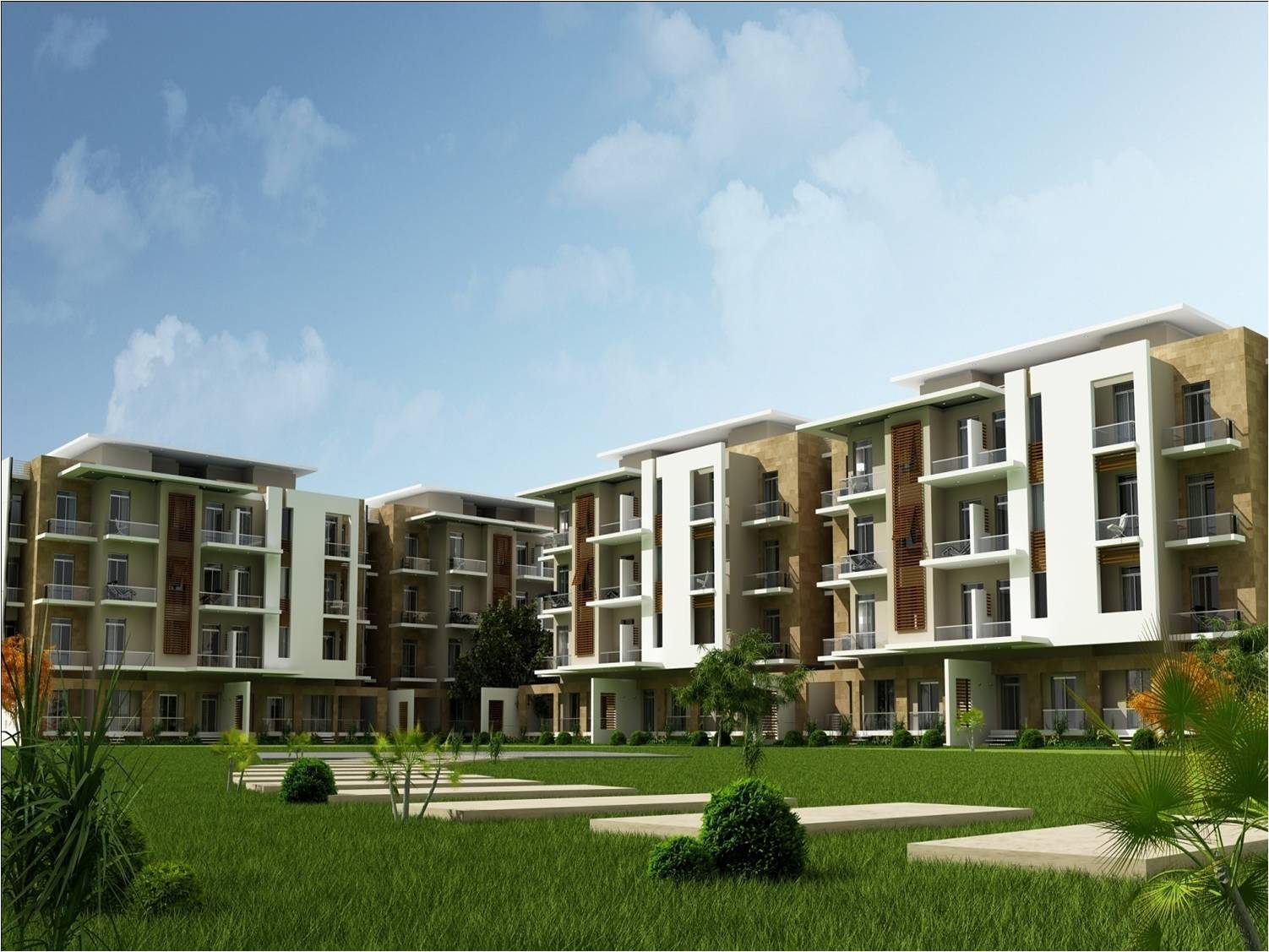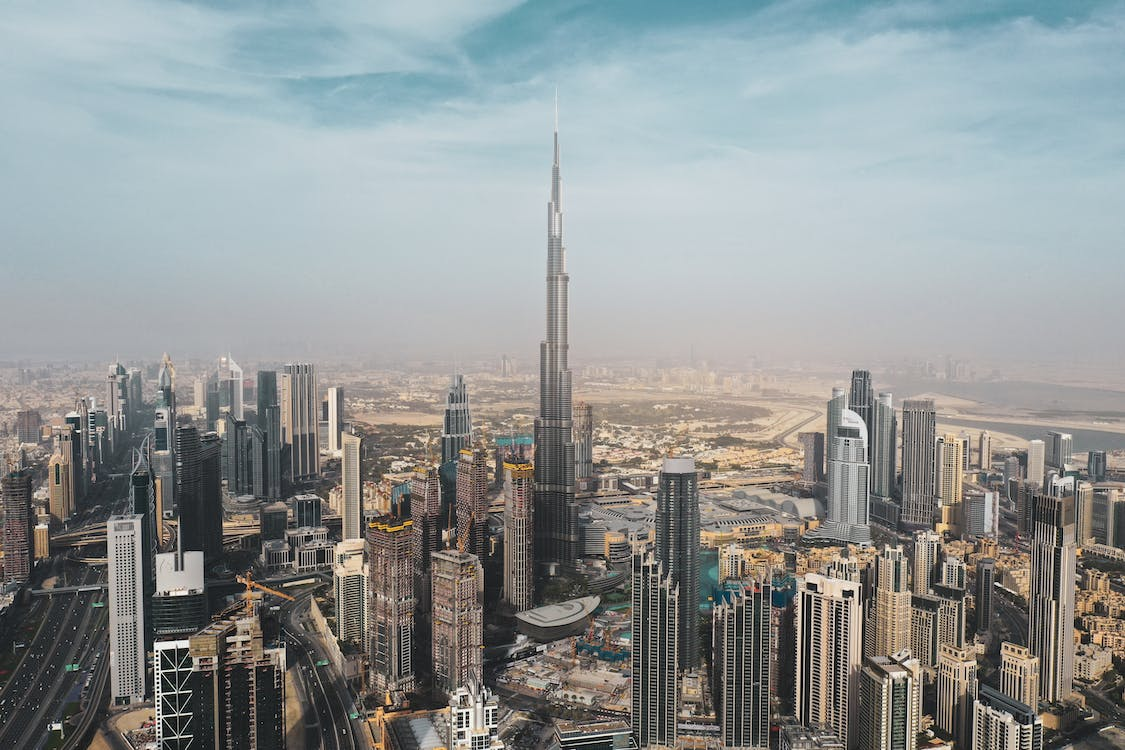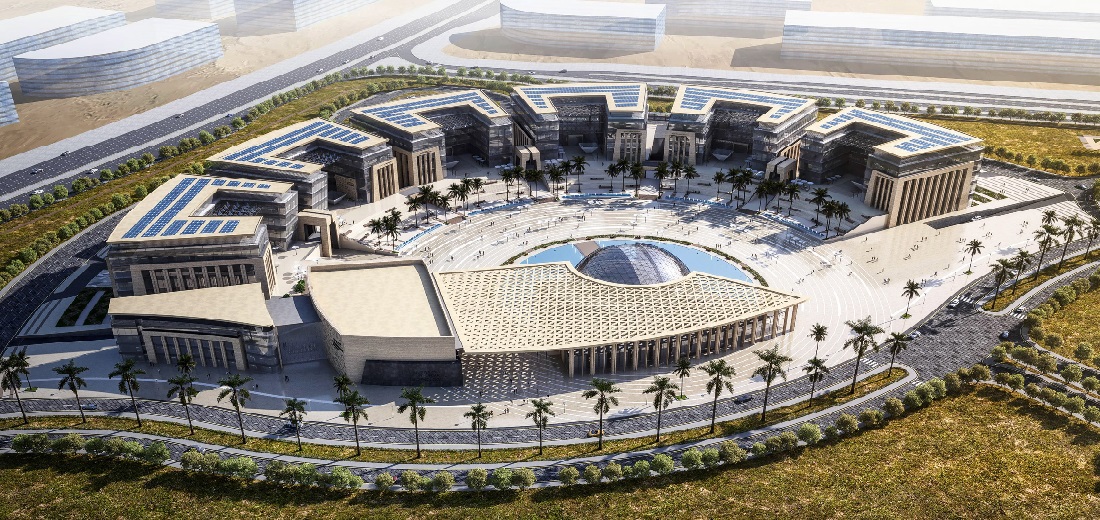Nestled along the banks of the Nile River, Luxor is a city like no other, a living museum that showcases the rich history, culture, and grandeur of ancient Egypt. Known as “The World’s Greatest Open-Air Museum,” Luxor is home to some of the most awe-inspiring temples, tombs, and monuments ever created. From the colossal Karnak Temple to the enigmatic Valley of the Kings, this city offers a journey back in time, where pharaohs ruled, gods were revered, and every monument tells a story. Whether you’re a history buff, a curious traveler, or simply in awe of ancient wonders, Luxor offers remarkable experiences at every turn. In this guide, we’ll explore the best things to do in Luxor, helping you uncover the treasures, mysteries, and magic that make this city a must-visit destination.
1. Explore the Majestic Karnak Temple Complex
- Location: East Bank of the Nile, Luxor
- Best Time to Visit: Early morning to avoid crowds and experience the serene atmosphere
The Karnak Temple Complex is one of the largest ancient religious locations in the world, sprawling across 200 acres and dedicated primarily to the god Amun. Enter through the famous Avenue of Sphinxes and discover colossal statues, intricately carved hieroglyphs, and towering columns in the Great Hypostyle Hall. Take advantage of the sacred lake and the Obelisk of Hatshepsut, an iconic landmark that captures the grandeur of Egyptian architecture.
2. Visit the Valley of the Kings
- Location: West Bank of the Nile, near the village of Qurna
- Best Time to Visit: October to April for cooler weather; early morning or late afternoon to avoid the midday heat
Nestled in the desert hills, the Valley of the Kings carries the tombs of Egypt’s most famous pharaohs, including Tutankhamun, Seti I, and Ramses II. With over 60 tombs to explore, each elaborately painted and steeped in myth, it’s a surreal journey through history. If possible, buy tickets to visit King Tutankhamun’s tomb to see the pharaoh’s resting place and golden treasures up close.
3. Marvel at the Colossi of Memnon
- Location: West Bank, near the Valley of the Kings
- Best Time to Visit: Early morning, especially for photography as the sun rises over the statues
The Colossi of Memnon are two massive statues of Pharaoh Amenhotep III, each about 18 meters (60 feet) tall. Originally guarding a vast temple that has long disappeared, these statues are now iconic symbols of Luxor. They offer a perfect introduction to the grand scale of ancient Egyptian monuments and are a great spot for a quick photo before exploring nearby sites.
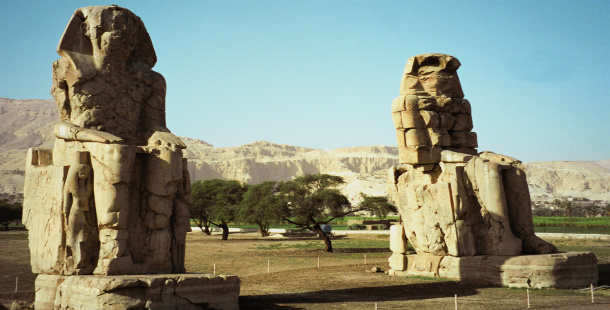
4. Discover the Luxor Temple
- Location: East Bank, in the center of Luxor City
- Best Time to Visit: Evening when it’s beautifully illuminated, creating a magical ambiance
The Luxor Temple was dedicated to rejuvenating kingship and was a place where pharaohs were crowned. Connected to Karnak by the newly restored Avenue of Sphinxes, it is particularly captivating when illuminated at night. The mixture of moonlight and soft lighting accentuates the temple’s statues, columns, and hieroglyphs, transporting visitors back in time.
5. Take a Hot Air Balloon Ride over Luxor
- Location: West Bank launch sites; pickups arranged from hotels
- Best Time to Visit: Sunrise for calm winds and unforgettable morning views
A hot air balloon ride over Luxor is a breathtaking experience. It provides panoramic views of the Nile River, lush farmlands, and stunning temples and tombs scattered across the desert landscape. Rising above the Valley of the Kings and the temples on the West Bank, this aerial perspective allows you to fully appreciate the sheer scale and beauty of Luxor’s ancient wonders.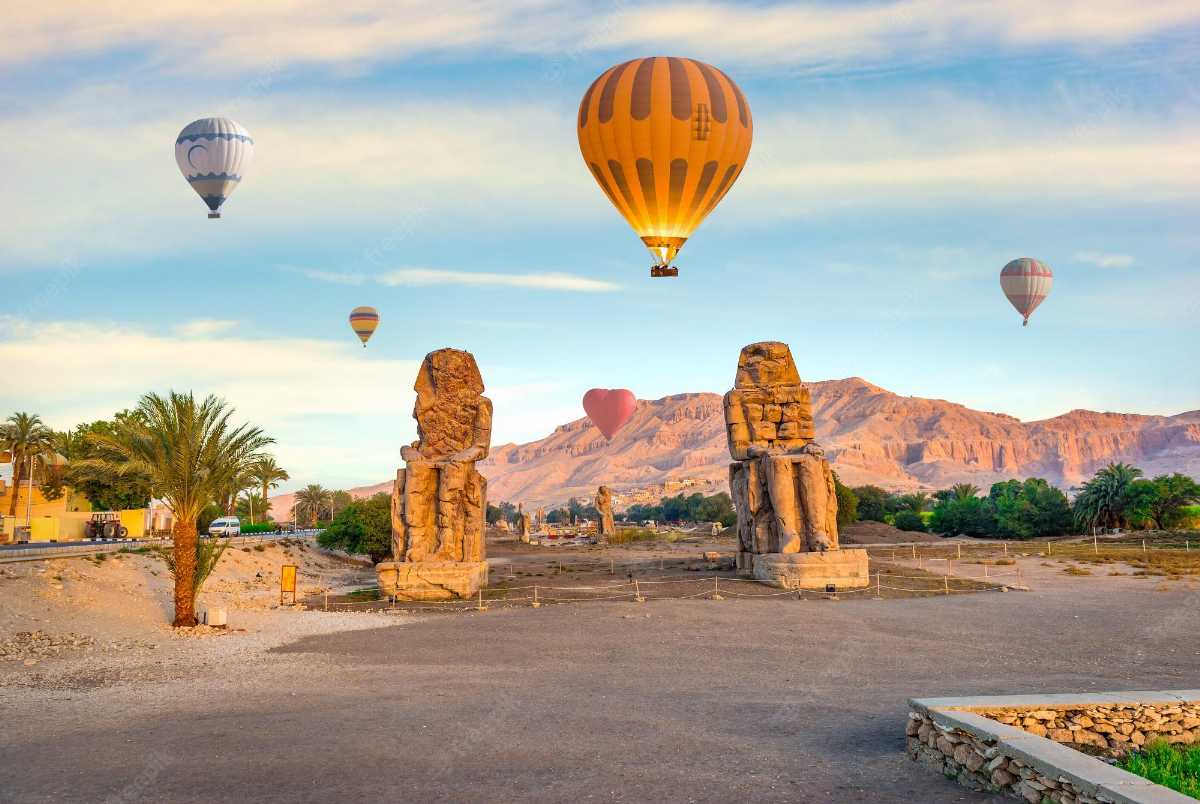
6. Explore the Temple of Hatshepsut
- Location: Deir el-Bahari, West Bank
- Best Time to Visit: Early morning for softer light and fewer crowds
Dedicated to Queen Hatshepsut, Egypt’s first female pharaoh, the Temple of Hatshepsut is a marvel of ancient engineering nestled against towering cliffs. This three-tiered, terraced structure is famous for its spectacular reliefs depicting the queen’s divine birth and journey to the land of Punt. It’s a striking site that emphasizes ancient Egypt’s artistry and architectural ingenuity.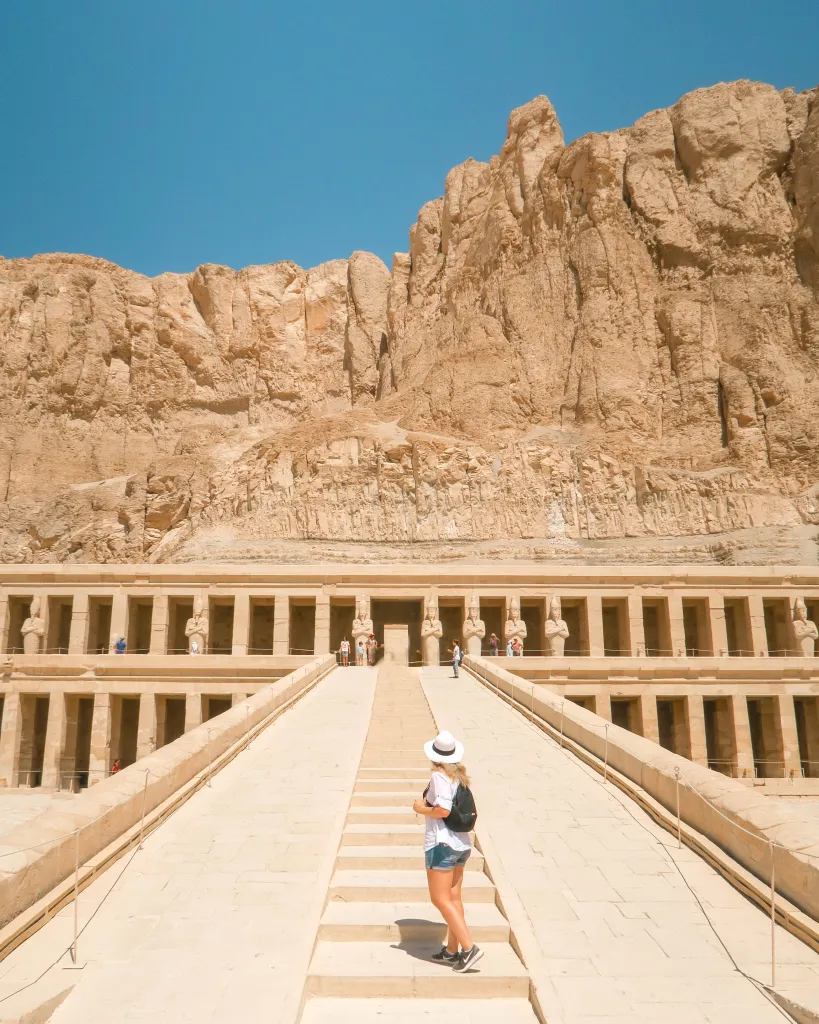
7. Wander through the Luxor Museum
- Location: Corniche El-Nil, East Bank
- Best Time to Visit: Late afternoon to escape the midday sun and enjoy a quieter setting
The Luxor Museum is a must-visit for history lovers. It offers a beautifully curated collection of ancient artifacts, mummies, and statues from Thebes and surrounding areas. Highlights include the mummies of two pharaohs, well-preserved pottery, jewelry, and an impressive statue of Thutmose III. The museum provides an excellent context for understanding Luxor’s archaeological sites and is a quieter spot to absorb Egypt’s history.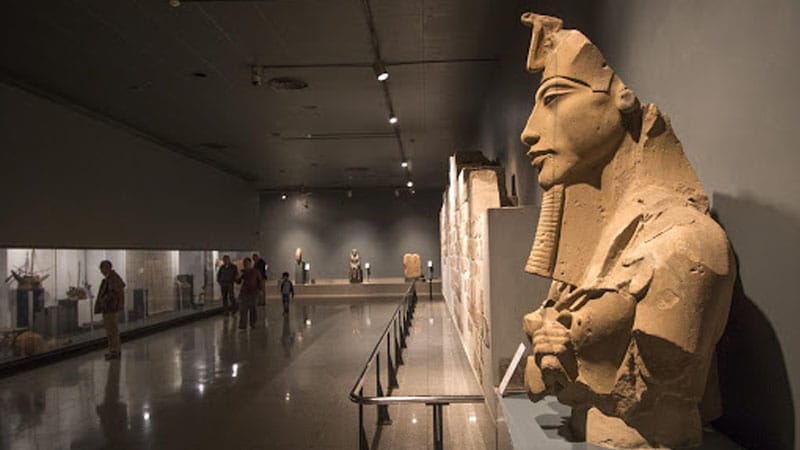
8. Walk Along the Avenue of Sphinxes
- Location: Connects Luxor Temple to Karnak Temple
- Best Time to Visit: Evening when the pathway is lit up, creating an enchanting atmosphere
Recently restored and reopened, the Avenue of Sphinxes is a 2.7-kilometer-long pathway lined with over 1,000 sphinx statues that connects Karnak Temple to Luxor Temple. Walking along this ancient processional route, once used for grand festivals, is a unique way to experience the grandeur and pageantry of ancient Egypt. The evening lighting adds a mystical feel to this historic pathway.
9. Discover the Ramesseum
- Location: West Bank, near the Valley of the Queens
- Best Time to Visit: Early morning for cooler temperatures and fewer tourists
The Ramesseum is a mortuary temple built by Ramses II, often called the “Temple of Millions of Years.” Though partially in ruins, the remaining statues, pillars, and carvings give an impressive glimpse into the magnificence of Ramses II’s reign. The fallen statue of Ramses is an especially striking sight and serves as a reminder of the grandeur and impermanence of ancient civilizations.
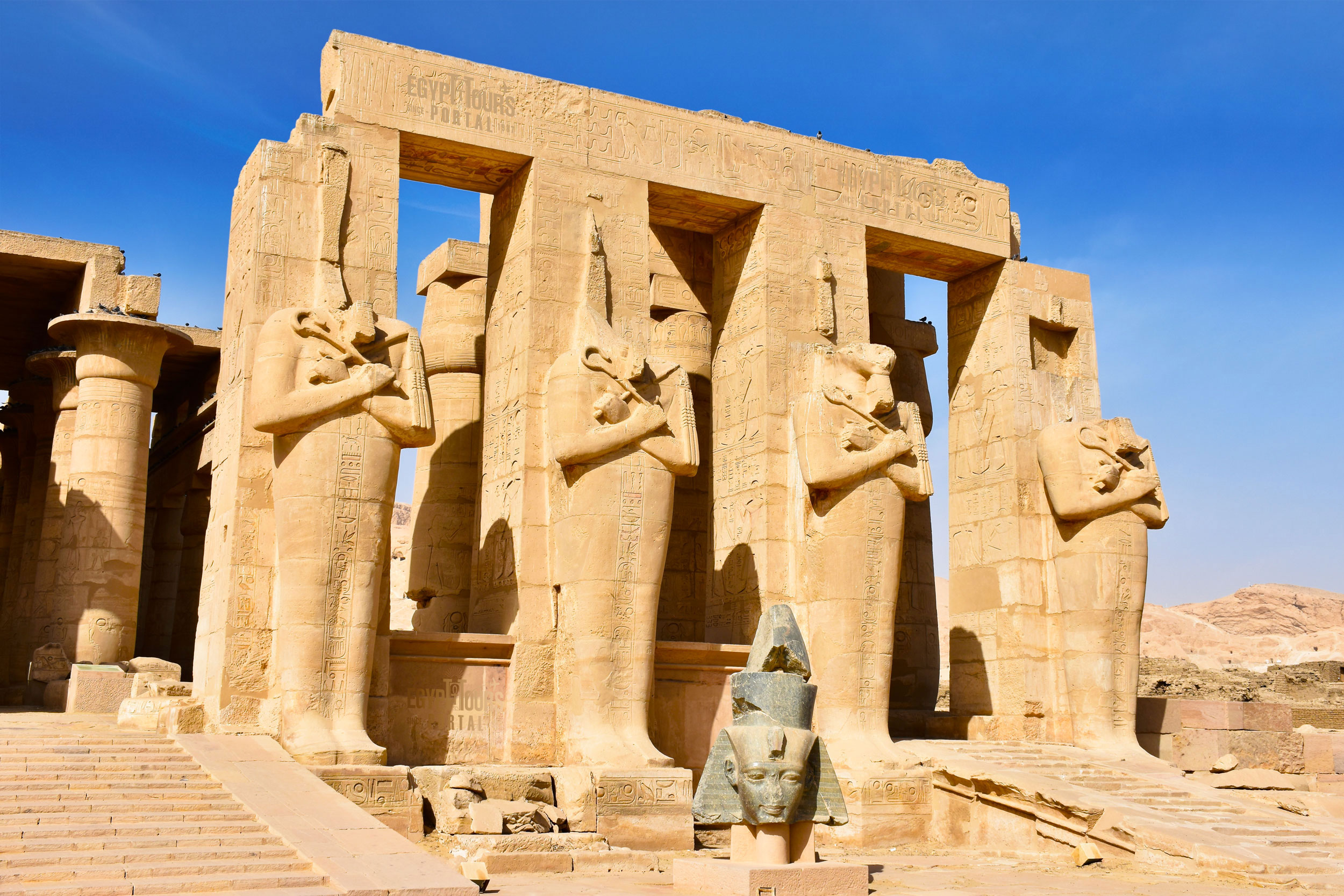
10. Cruise the Nile River
- Location: Luxor’s East Bank is the primary departure point
- Best Time to Visit: Sunset for the most beautiful views and pleasant temperatures
Every trip to Luxor is complete with a cruise along the Nile. Choose from traditional felucca sailboats or modern river cruises to see the city from the river that sustained it for millennia. A sunset cruise is wonderful, with the temples and surrounding landscape bathed in warm golden light. Some cruises offer onboard dining, adding a touch of romance and luxury to the experience.
11. Visit the Temple of Medinet Habu
- Location: West Bank of Luxor, near the Ramesseum
- Best Time to Visit: Early morning or late afternoon for softer light and cooler temperatures
The Temple of Medinet Habu, built by Ramses III, is a lesser-known gem on Luxor’s West Bank. It’s famous for its vibrant and well-preserved reliefs depicting battle scenes, deities, and daily life. The massive towers, inner sanctuaries, and columns give a quieter experience than the more famous sites. Medinet Habu gives a deeper insight into ancient Egyptians’ daily lives and religious beliefs.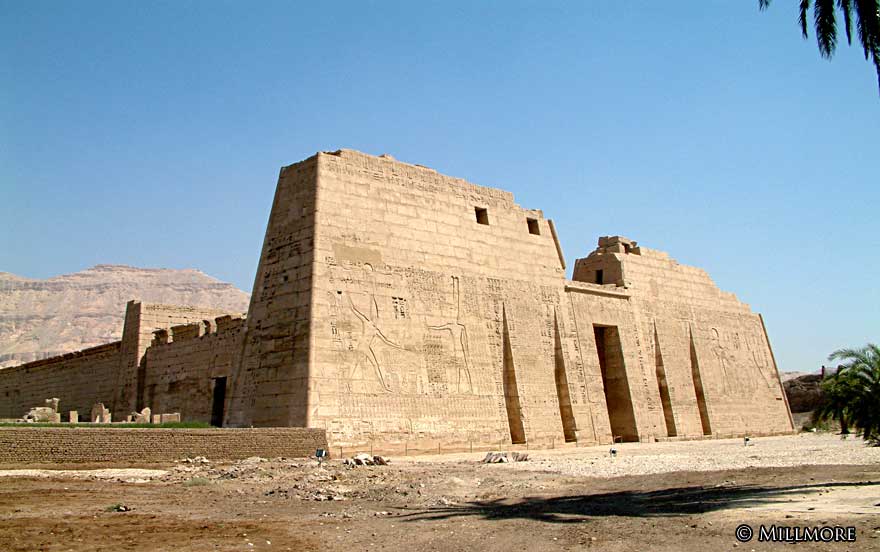
12. Explore the Tombs of the Nobles
- Location: West Bank, near the Valley of the Kings and Queens
- Best Time to Visit: Late morning or afternoon for a quieter experience
While the Valley of the Kings houses the tombs of pharaohs, the Nobles’ Tombs are the resting places of ancient Egypt’s influential officials, priests, and artists. These tombs, often overlooked, contain beautifully detailed paintings showing scenes of daily life, agriculture, and religious practices. Some notable tombs include Rekhmire, Ramose, and Sennefer, each with exceptional art that provides a different perspective on ancient Egyptian society.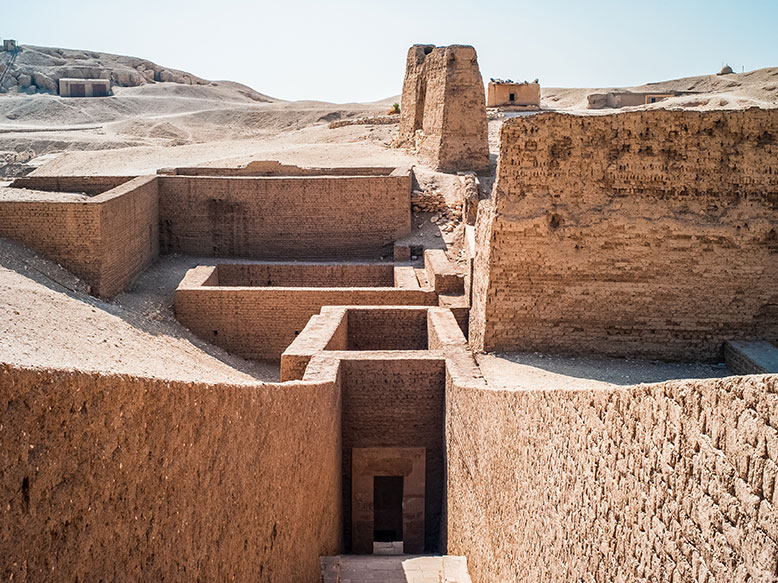
13. Stroll Through the Valley of the Queens
- Location: West Bank, close to the Valley of the Kings
- Best Time to Visit: Morning or late afternoon to avoid the midday heat
The Valley of the Queens is where the wives and children of pharaohs were buried, including Queen Nefertari, whose tomb is among the most beautiful in Egypt. The colorful murals in Nefertari’s tomb depict the queen’s journey through the afterlife with intricate detail and bright colors. A ticket to Nefertari’s tomb requires an additional fee, but it’s well worth the experience if you’re fascinated by Egyptian art.
- Experience Luxor’s Local Souks and Markets
- Location: East Bank, near Luxor Temple and the city center
- Best Time to Visit: Evening for a lively atmosphere
Luxor’s markets are an immersive experience of colorful textiles, aromatic spices, handcrafted souvenirs, and local art. The most famous market, Luxor Souk, stretches along multiple streets and is ideal for finding unique items and sampling traditional Egyptian snacks. It’s also a great place to interact with locals, practice your bargaining skills, and pick up authentic souvenirs of your journey.
14. Visit the Mummification Museum
- Location: Corniche El-Nil, East Bank
- Best Time to Visit: Afternoon or early evening
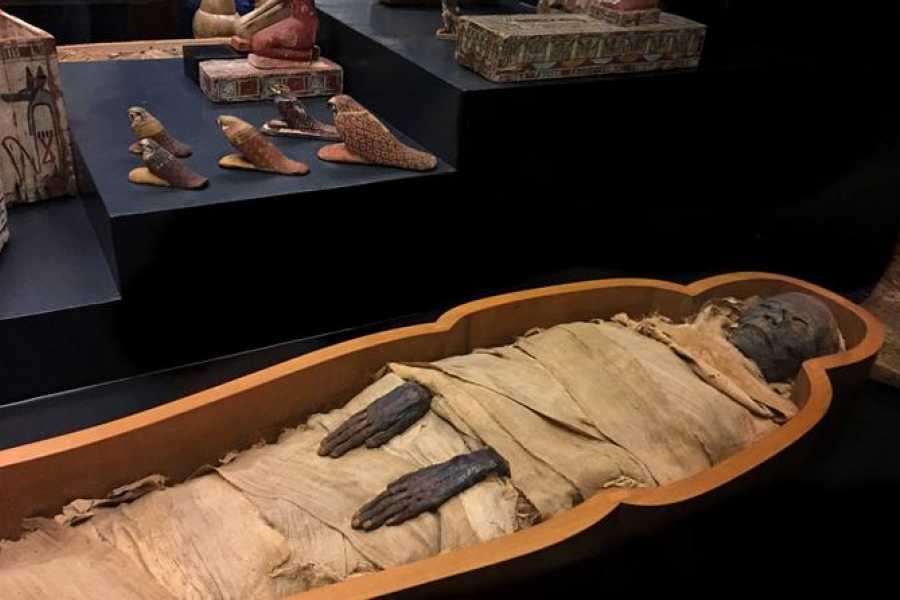
The Mummification Museum is a fascinating stop that provides insight into ancient Egyptians’ techniques to preserve bodies for the afterlife. Exhibits include:
- Mummified animals.
- Tools used in the embalming process.
- Details about the beliefs surrounding death and the afterlife. It’s
A small but informative museum that deepens your understanding of Egyptian burial customs and adds context to your visits to the tombs.
When Is the Best Time to Visit Luxor?
The best time to visit Luxor is between October and April. During these months, temperatures are more manageable, typically varying from 20°C to 30°C (68°F to 86°F). These cooler conditions make exploring Luxor’s many outdoor sites, including the temples, tombs, and desert landscapes, much easier.
Avoid visiting Luxor in the summer (June to August), when temperatures can soar above 40°C (104°F). The intense heat can make exploring outdoor sites challenging and limit your enjoyment of the experience. However, if you visit during summer, plan to explore early in the morning or late in the afternoon when temperatures are lower.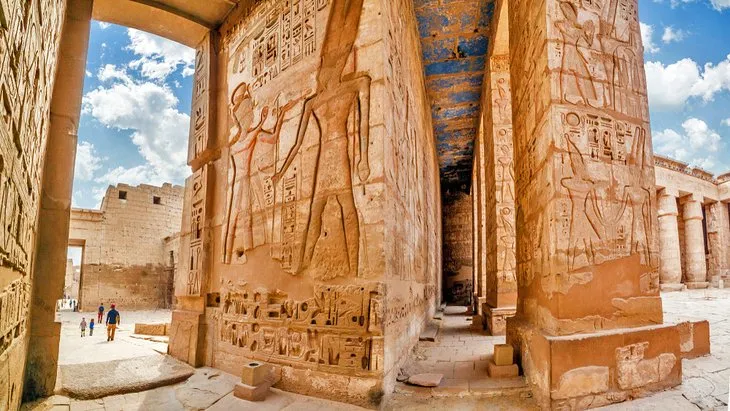
Practical Tips for Visiting Luxor
- Get an Early Start: Luxor’s most popular sites, such as the Valley of the Kings and Karnak Temple, can get crowded as the day progresses. Arriving early not only helps you avoid crowds but also allows you to experience the sites in cooler temperatures.
- Dress for the Climate: Luxor’s climate is hot and dry, so lightweight, breathable clothing, a hat, and sunscreen are essential. Remember to carry plenty of water, especially when exploring outdoor sites.
- Hire a Guide: To truly appreciate the history and importance of Luxor’s temples and tombs, consider hiring a guide. Many guides are highly experienced about ancient Egyptian history and can provide in-depth explanations that bring the sites to life.
- Consider Multi-Day Visits: A single day in Luxor may feel rushed with so much to see. Spend two to three days exploring the sites at a chilling pace, allowing time to absorb the city’s atmosphere fully.
- Respect the Rules: Photography may be restricted in certain areas, especially inside tombs. Always check for signs and follow instructions to preserve these ancient sites for future generations.
Luxor is a city that takes you on a journey through the ages, blending stunning landscapes with some of the most significant relics of human civilization. Luxor offers endless wonders for travelers looking back in time, from exploring grand temples to floating along the Nile. This guide highlights the best of Luxor’s must-visit sites, helping you create unforgettable memories in the heart of ancient Egypt.



